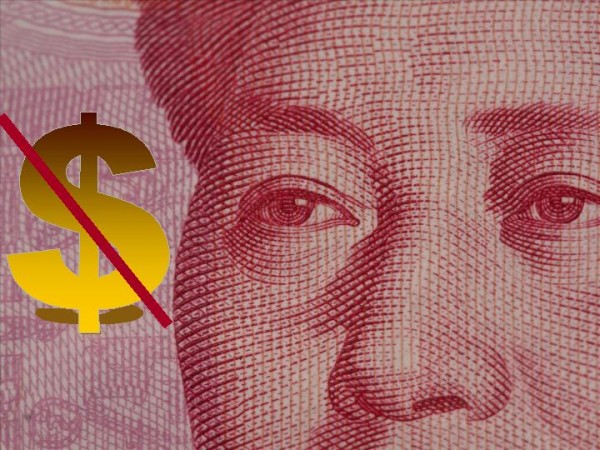 There is a select group of countries (areas) that have something in common: the USA, the UK, Japan and the eurozone. The currency in each of these places is one of the IMF’s reserve currencies. But is China about to enter the mix?
There is a select group of countries (areas) that have something in common: the USA, the UK, Japan and the eurozone. The currency in each of these places is one of the IMF’s reserve currencies. But is China about to enter the mix?
The growth of China has been spectacular and it is now the second largest economy in the world, behind the USA. It is on the back on this growth that China has asked the IMF for the yuan to be included in the IMF’s basket of reserve currencies. The expectation is that Christine Lagarde, the IMF’s Managing Director, will announce its inclusion and, while some suggest that the yuan could become one of the major currencies in the world over the next decade following this move, others say that this is just a ‘symbolic gesture’. But that doesn’t seem to matter, according to Andrew Malcolm, Asia head of capital at Linklaters:
“The direct impact won’t be felt in the near term, not least because implementation of the new basket won’t be until Q3 2016. However the symbolic importance cannot be overlooked…By effectively endorsing the renminbi as a freely useable currency, it sends a strong signal about China’s importance in the global financial markets.”
Concerns about the yuan being included have previously focused on China’s alleged under-valuation of its currency, as a means of boosting export demand, as we discussed in What a devalued yuan means to the rest of the world. However, China has made concerted efforts for the IMF to make this move and China’s continuing financial reforms may be essential. The hope is that with the yuan on the IMF’s special list, it will boost the use of the yuan as a reserve currency for investors. It will also be a contributor to the value of the special drawing right, which is used by the IMF for pricing its emergency loans.
Although the Chinese stock market has been somewhat volatile over the summer period, leading to a devaluation of the currency, it is perhaps this move towards a more market based exchange rate that has allowed the IMF to consider this move. We wait for an announcement from the IMF and the articles below consider this story.
Chinese yuan likely to be added to IMF special basket of currencies The Guardian, Katie Allen (29/11/15)
‘Chinese yuan set for IMF reserve status BBC News (30/11/15)
IMF to make Chinese yuan reserve currency in historic move The Telegraph, James Titcomb (29/11/15)
China selloff pressure Asia stocks, yuan jumpy before IMF decision Reuters, Hideyuki Sano (30/11/15)
IMF’s yuan inclusion signals less risk taking in China Reuters, Pete Sweeney and Krista Hughes (29/11/15)
Did the yuan really pass the IMF currency test? You’ll know soon Bloomberg, Andrew Mayeda (29/11/15)
Questions
- What is meant by a reserve currency?
- Why do you think that the inclusion of the yuan on the IMF’s list of reserve currencies will boost investment in China?
- One of the reasons for the delay in the yuan’s inclusion is the alleged under-valuation of the currency. How have the Chinese authorities allegedly engineered a devaluation of the yuan? To what extent could it be described as a ‘depreciation’ rather than a ‘devaluation’?
- Look at the key tests that the yuan must pass in order to be included. Do you think it has passed them given the report produced a few months ago?
- The weighting that a currency is given in the IMF’s basket of currencies affects the interest rate paid when countries borrow from the IMF. How does this work?
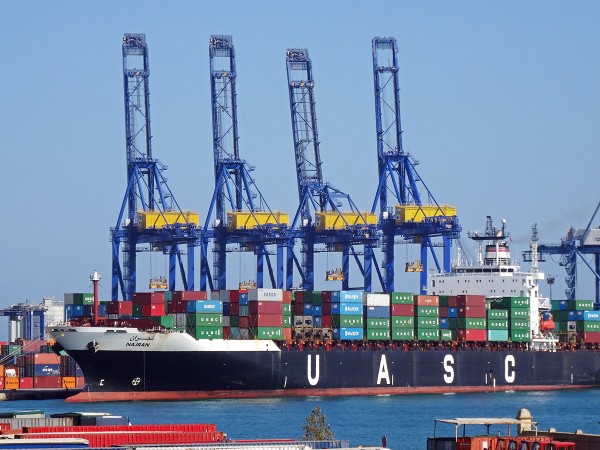 Governments of twelve Pacific rim nations, including the USA, Canada, Japan and Australia have just agreed to a trade deal – the Trans-Pacific Partnership (TPP). This represents the most significant trade deal since the completion of the Uruguay Round and the creation of the World Trade Organisation in 1994. Together these countries account for some 40% of global GDP. The deal must still be signed by the leaders of the TPP countries, however, and, more importantly, ratified by their legislatures, where, to put it mildly, agreement is not universal.
Governments of twelve Pacific rim nations, including the USA, Canada, Japan and Australia have just agreed to a trade deal – the Trans-Pacific Partnership (TPP). This represents the most significant trade deal since the completion of the Uruguay Round and the creation of the World Trade Organisation in 1994. Together these countries account for some 40% of global GDP. The deal must still be signed by the leaders of the TPP countries, however, and, more importantly, ratified by their legislatures, where, to put it mildly, agreement is not universal.
The deal is hailed as a move towards freer trade in a number of areas, including agriculture and services. But it also provides greater protection for owners of intellectual property. Proponents of the deal argue that it will to lead large-scale reductions in tariffs and other trade restrictions. As the Economist article states:
For American exporters alone, 18,000 individual tariffs will be reduced to zero. Much the same will be true for firms in the other 11 members. Even agricultural barriers, usually among the most heavily defended, will start to come down. Foreigners will gain a toehold in Canada’s dairy sector and a bigger share of Japan’s beef market, for example.
But despite this being the biggest trade deal for some 20 years, it has been highly criticised by various groups. Freer trade threatens industries that will face competition from other countries in the TPP. This unites both corporations and unions in trying to protect their own specific interests. However, the agreement gives ground to many special industries by retaining protection in a number of areas, at least for several years.
 It has also been criticised by environmentalists who worry about the removal of various environmental safeguards. In answer to these concerns, there are several provisions in the agreement that provide some measure of environmental protection so as to slow things such as deforestation, overfishing and carbon emissions. But environmentalists argue that these provisions do not go far enough.
It has also been criticised by environmentalists who worry about the removal of various environmental safeguards. In answer to these concerns, there are several provisions in the agreement that provide some measure of environmental protection so as to slow things such as deforestation, overfishing and carbon emissions. But environmentalists argue that these provisions do not go far enough.
Others are concerned that the agreement will allow corporations to challenge governments and undermine the ability of governments to regulate them.
The articles look at some of the details of the agreement and at the arguments for and against ratifying it. Some of these arguments go to the heart of the age-old free trade versus protection debate.
US, Japan and 10 countries strike Pacific trade deal Financial Times, Shawn Donnan and Demetri Sevastopulo (5/10/15)
What Trade-Deal Critics Are Missing Wall Street Journal, Zachary Karabell (8/10/15)
The Trans-Pacific Partnership: Weighing anchor The Economist (10/10/15)
A trade deal is no excuse to milk taxpayers Globe and Mail (Canada), Yuen Pau Woo (7/10/15)
What Is the Trans-Pacific Partnership Agreement (TPP)? Electronic Frontier Foundation
Wikileaks release of TPP deal text stokes ‘freedom of expression’ fears The Guardian, Sam Thielman (9/10/15)
TPP’s clauses that let Australia be sued are weapons of legal destruction, says lawyer The Guardian, Jess Hill (10/11/15)
Questions
- Who are likely to benefit from the TPP?
- Why are American republicans generally opposed to the agreement?
- What are the objections to the TPP’s provisions for the protection of intellectual property rights?
- Would the current twelve members of the TPP gain if China joined?
- What are the objections of environmentalists to TPP?
- What effect will the TPP on European countries?
- Other than a reduction in tariffs, what other types of measures are included in the TPP?
- What is the Investor-State Dispute Settlement mechanism and what criticisms have been made of it? Are they justified?
 The UK’s balance on trade continues to be sharply in deficit. At the same time, both manufacturing and overall production are still well below their pre-crisis levels. What is more, with a sterling exchange rate that has appreciated substantially over recent months, UK exports are at an increasing price disadvantage. The hoped-for re-balancing of the economy from debt-financed consumption to investment and exports has not occurred. Investment in the UK remains low relative to that in other major economies (see).
The UK’s balance on trade continues to be sharply in deficit. At the same time, both manufacturing and overall production are still well below their pre-crisis levels. What is more, with a sterling exchange rate that has appreciated substantially over recent months, UK exports are at an increasing price disadvantage. The hoped-for re-balancing of the economy from debt-financed consumption to investment and exports has not occurred. Investment in the UK remains low relative to that in other major economies (see).
But other developments in the global economy are working in the UK’s favour.
Manufacturing globally is becoming more capital intensive, which reduces the comparative advantage of developing countries with low labour costs.
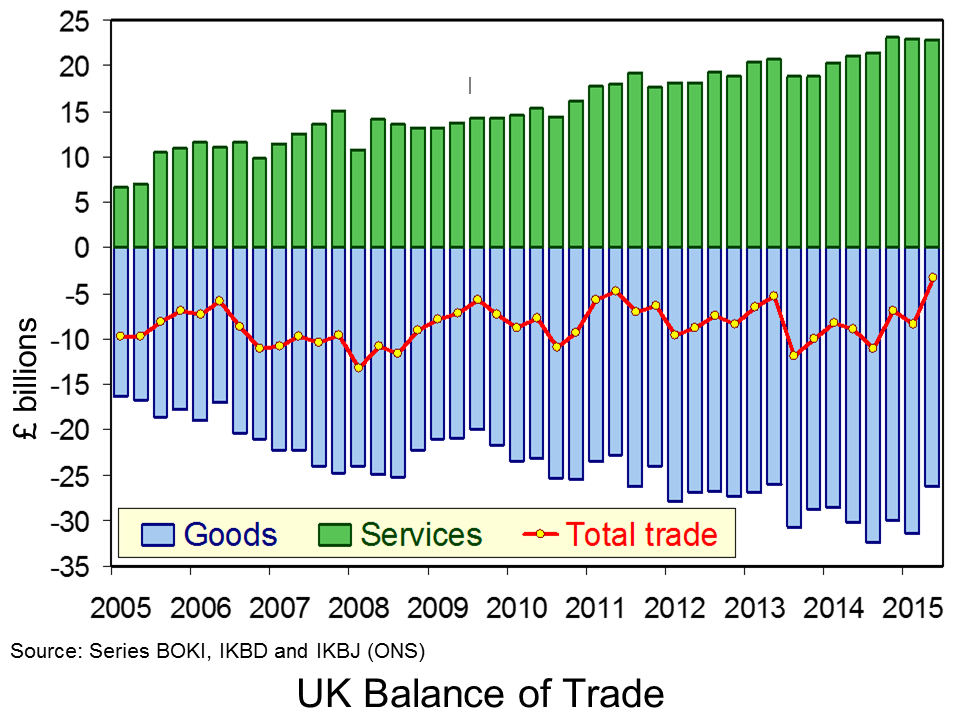 At the same time, the dividing line between manufacturing and services is becoming more blurred. Manufacturers in developing countries may still produce parts, such as chips or engines, but the design, marketing and sales of the products may take place in developed countries, such as the UK. Indeed, as products become more sophisticated, an increasing amount of value added may occur in developed countries.
At the same time, the dividing line between manufacturing and services is becoming more blurred. Manufacturers in developing countries may still produce parts, such as chips or engines, but the design, marketing and sales of the products may take place in developed countries, such as the UK. Indeed, as products become more sophisticated, an increasing amount of value added may occur in developed countries.
The UK may be particularly well-placed in this regard. It can provide many high-end services in IT, business support and financial services to international manufacturers. It may have a comparative advantage in idea-intensive production.
 Finally with a higher exchange rate, the UK’s terms of trade have been improving. The downside is that it makes UK exports more expensive in foreign currency terms, but it also makes commodity prices cheaper, which have already fallen in dollar terms, and also the prices of imported component parts. This helps offset the effect of the appreciation of the exchange rate on exports.
Finally with a higher exchange rate, the UK’s terms of trade have been improving. The downside is that it makes UK exports more expensive in foreign currency terms, but it also makes commodity prices cheaper, which have already fallen in dollar terms, and also the prices of imported component parts. This helps offset the effect of the appreciation of the exchange rate on exports.
The following article by Jeremy Warner considers whether, despite its poor performance in traditional manufacturing, the UK might have hit an economic ‘sweet spot’ in its trade position.
Article
Unbalanced but lucky, Britain hits an economic sweet spot The Telegraph, Jeremy Warner (8/9/15)
Data
UK Trade (Excel file) ONS (9/9/15)
(See, for example, Worksheet 1. You can search for longer series using Google advanced search, putting www.ons.gov.uk in the ‘site or domaine’ box and searching for a particular series, using the series identifier found at the top of each column in the Excel file, such as BOKI for balance on trade in goods.)
Exchange rate data Bank of England Statistical Interactive Database
Questions
- Explain the difference between the balance on trade, the balance on trade in goods and the balance of payments on current account.
- Why has the UK not experienced a re-balancing of the economy as hope for by the Chancellor of the Exchequer, amongst others?
- What is meant by the ‘terms of trade’?
- What would cause an ‘improvement’ in the terms of trade?
- Are the UK’s terms of trade likely to move in the UK’s favour in the coming months? Explain.
- What current factors are mitigating against a recovery of UK manufacturing exports?
- Is de-industrialisation necessarily a ‘bad thing’?
- Does the development of new capital-intensive technologies in manufacturing mean that the UK could become a net exporter of manufactures? Explain why or why not.
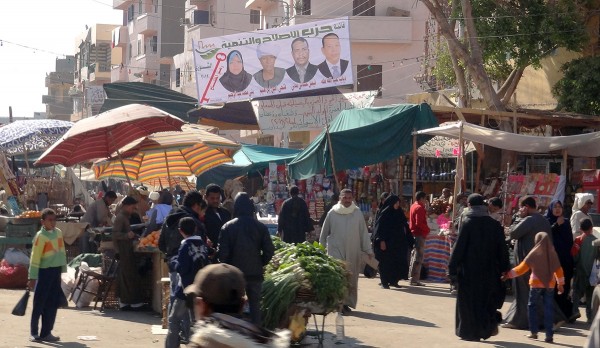 A deal has just been signed between 26 African nations to form a new free trade area, the Tripartite Free Trade Area (TFTA). The countries have a population of 625 million (56% of Africa’s total) and a GDP of $1.6 trillion (63% of Africa’s total). The deal effectively combines three existing free trade areas: the Common Market for Eastern and Southern Africa, the Southern African Development Community and the East African Community.
A deal has just been signed between 26 African nations to form a new free trade area, the Tripartite Free Trade Area (TFTA). The countries have a population of 625 million (56% of Africa’s total) and a GDP of $1.6 trillion (63% of Africa’s total). The deal effectively combines three existing free trade areas: the Common Market for Eastern and Southern Africa, the Southern African Development Community and the East African Community.
Although the deal has been signed by the nations’ leaders, it still needs parliamentary approval from each of the countries. It is hoped that this will be achieved by 2017. If it is, it will mark a major step forward in encouraging intra-African trade.
The deal will involve the removal of trade barriers on most goods and lead to a reduction in overall tariffs by more than 50%. The expectation of the leaders is that this will generate $1 trillion worth of economic activity across the 26 countries through a process of trade creation, investment, increased competition and the encouragement of infrastructure development. 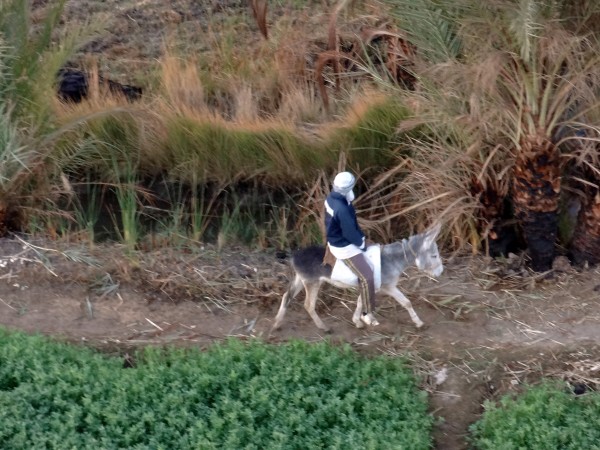 But given the current poor state of infrastructure and the lack of manufacturing capacity in many of the countries, the agreement will also encourage co-operation to promote co-ordinated industrial and infrastructure development.
But given the current poor state of infrastructure and the lack of manufacturing capacity in many of the countries, the agreement will also encourage co-operation to promote co-ordinated industrial and infrastructure development.
Up to now, the development of intra-African trade has been relatively slow because of poor road and rail networks and a high average protection rate – 8.7% on exports to other African countries compared with 2.5% on exports to non-African countries. As a result, intra-African trade currently accounts for just 12% of total African trade. It is hoped that the development of TFTA will result in this rising to over 30%.
Much of the gains will come from economies of scale. As Kenyan academic Calestous Juma says:
“By having larger markets, it signals the possibility of being able to manufacture products at a scale that is cost-effective. For example, where you need large-scale investments like $200m to create a pharmaceutical factory, you couldn’t do that if you were only selling the products in one country.”
The question is whether the agreement signed on the 10 June will lead to the member countries fully taking advantage of the opportunities for trade creation. Agreeing on a deal is one thing; having genuinely free trade and investing in infrastructure and new efficient industries is another.
Videos and audio
 African leaders ink trade deal Deutsche Welle (11/6/15)
African leaders ink trade deal Deutsche Welle (11/6/15)
 African leaders sign pact to create ‘Cape to Cairo’ free trade bloc euronews (10/6/15)
African leaders sign pact to create ‘Cape to Cairo’ free trade bloc euronews (10/6/15)
 Africa Free Trade Analysis BBC Africa, Calestous Juma (9/6/15)
Africa Free Trade Analysis BBC Africa, Calestous Juma (9/6/15)
Articles
African Leaders To Sign Free Trade Agreement To Create Common Market International Business Times, Aditya Tejas (10.6.15)
EAC, COMESA and SADC Blocs Ink ‘Historic’ Trade Deal allAfrica, James Karuhanga (11/6/15)
Tripartite Free Trade Area an Opportunity Not a Threat allAfrica, Sindiso Ngwenya (9/6/15)
Africa a step closer to free trade area Business Report (South Africa), Rob Davies (11/6/15)
The Cape to Cairo trade ‘super bloc’ is here; 15 surprising – and shocking – facts on trade within Africa Mail & Guardian (Kenya), Christine Mungai (8/6/15)
The tripartite free trade area agreement in Africa is bound to disappoint Quartz Africa, Hilary Matfess (10/6/15)
Africa creates TFTA – Cape to Cairo free-trade zone BBC News Africa (10/6/15)
Will the Cape to Cairo free-trade zone work? BBC News Africa, Lerato Mbele (10/6/15)
African free trade still some way off BBC News, Matthew Davies (10/6/15)
Zambia not to benefit from Africa’s TFTA Medafrica, Geraldine Boechat (10/6/15)
Questions
- Distinguish between a free trade area, a customs union and a common market.
- What does the law of comparative advantage imply about the gains from forming a free trade area?
- Distinguish between trade creation and trade diversion.
- Why is it likely that there will be considerable trade creation from TFTA? Would there be any trade diversion?
- Why are small countries with a relatively low level of economic development likely to experience more trade creation than larger, richer ones?
- What barriers might remain in trade between the TFTA countries?
- Why might smaller, less developed members of TFTA be worried about the removal of trade barriers?
- Why might concentrating on developing local capacity, rather than just lowering tariffs, be a more effective way of developing intra-African trade
- What ‘informal’ barriers to trade exist in many African countries?
- Why is it that ‘Ordinary Africans are most probably not holding their breath’ about the gains from TFTA?
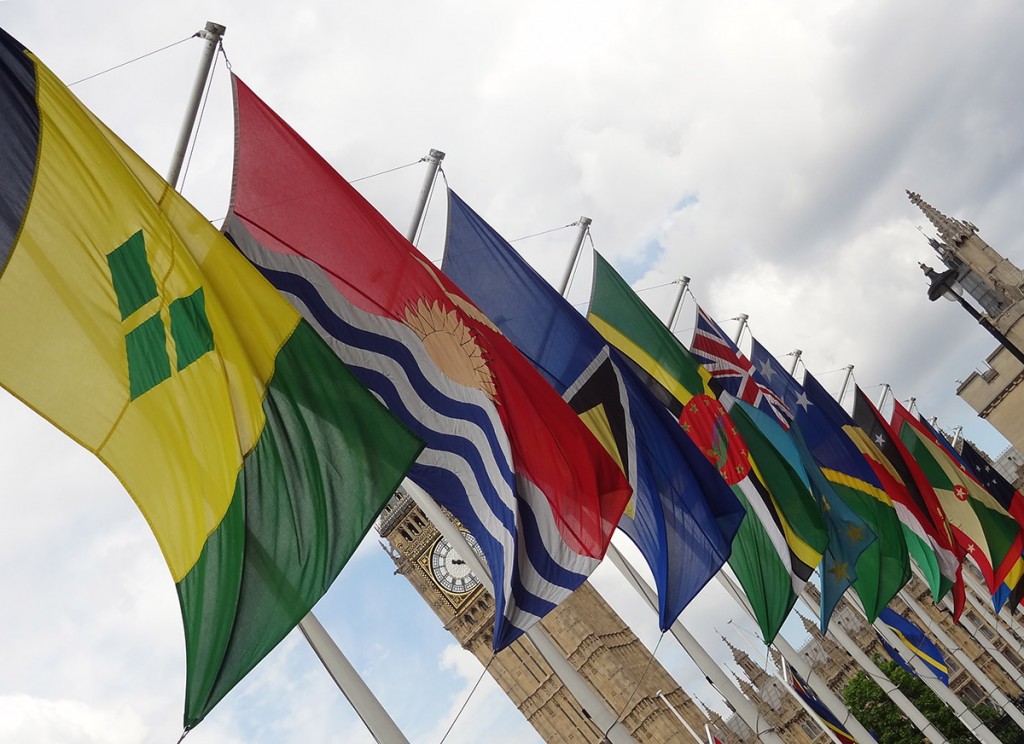 The period from the end of the Second World War until the financial crisis of 2007–8 was one of increasing globalisation. World trade rose considerably faster than world GDP. The average annual growth in world GDP from 1950 to 2007 was 4.2%; the average annual growth in world merchandise exports was 6.7%.
The period from the end of the Second World War until the financial crisis of 2007–8 was one of increasing globalisation. World trade rose considerably faster than world GDP. The average annual growth in world GDP from 1950 to 2007 was 4.2%; the average annual growth in world merchandise exports was 6.7%.
And there were other ways in which the world was becoming increasingly interconnected. Cross-border financial flows grew strongly, especially in the 1990s and up to 2007. In the early 1990s, global cross-border capital flows were around 4% of world annual GDP; by 2007, they had risen to over 20%. The increasing spread of multinational corporations, improvements in transport, greater international movement of labour and improved communications were all factors that contributed to a deepening of globalisation.
 But have things begun to change? Have we entered into an era of ‘deglobalisation’? Certainly some indicators would suggest this. In the three years 2012–14, world exports grew more slowly than world GDP. Global cross-border financial flows remain at about one-third of their 2007 peak. Increased banking regulations are making it harder for financial institutions to engage in international speculative activities.
But have things begun to change? Have we entered into an era of ‘deglobalisation’? Certainly some indicators would suggest this. In the three years 2012–14, world exports grew more slowly than world GDP. Global cross-border financial flows remain at about one-third of their 2007 peak. Increased banking regulations are making it harder for financial institutions to engage in international speculative activities.
What is more, with political turmoil in many countries, multinational corporations are more cautious about investing in such markets. Many countries are seeking to contain immigration. Fears of global instability are encouraging many firms to look inwards. After more than 13 years, settlement of the Doha round of international trade negotiations still seems a long way off. Protectionist measures abound, often amount to giving favourable treatment to domestic firms.
 The Observer article considers whether the process of increased globalisation is now dead. Or will better banking regulations ultimately encourage capital flows to grow again; and will the inexorable march of technological progress give international trade and investment a renewed boost? Will lower energy and commodity prices help to reboot the global economy? Will the ‘Great Recession’ have resulted in what turns out to be merely a blip in the continued integration of the global economy? Is it, as the Huffington Post article states, that ‘globalization has a gravitational pull that is hard to resist’? See what the articles and speech have to say and what they conclude.
The Observer article considers whether the process of increased globalisation is now dead. Or will better banking regulations ultimately encourage capital flows to grow again; and will the inexorable march of technological progress give international trade and investment a renewed boost? Will lower energy and commodity prices help to reboot the global economy? Will the ‘Great Recession’ have resulted in what turns out to be merely a blip in the continued integration of the global economy? Is it, as the Huffington Post article states, that ‘globalization has a gravitational pull that is hard to resist’? See what the articles and speech have to say and what they conclude.
Articles
Borders are closing and banks are in retreat. Is globalisation dead? The Observer, Heather Stewart (23/5/15)
Is Globalization Finally Dead? Huffington Post, Peter Hall (6/5/14)
Speech
Financial “deglobalization”?: capital flows, banks, and the Beatles Bank of England, Kristin Forbes (18/11/14)
Questions
- Define globalisation.
- How does globalisation affect the distribution of income (a) between countries; (b) within countries?
- Why has the Doha round of trade negotiations stalled?
- Examine the factors that might be leading to deglobalisation.
- What are the implications of banking deglobalisation for the UK?
- Are protectionist measures always undesirable in terms of increasing global GDP?
- What forces of globalisation are hard to resist?
 There is a select group of countries (areas) that have something in common: the USA, the UK, Japan and the eurozone. The currency in each of these places is one of the IMF’s reserve currencies. But is China about to enter the mix?
There is a select group of countries (areas) that have something in common: the USA, the UK, Japan and the eurozone. The currency in each of these places is one of the IMF’s reserve currencies. But is China about to enter the mix?









